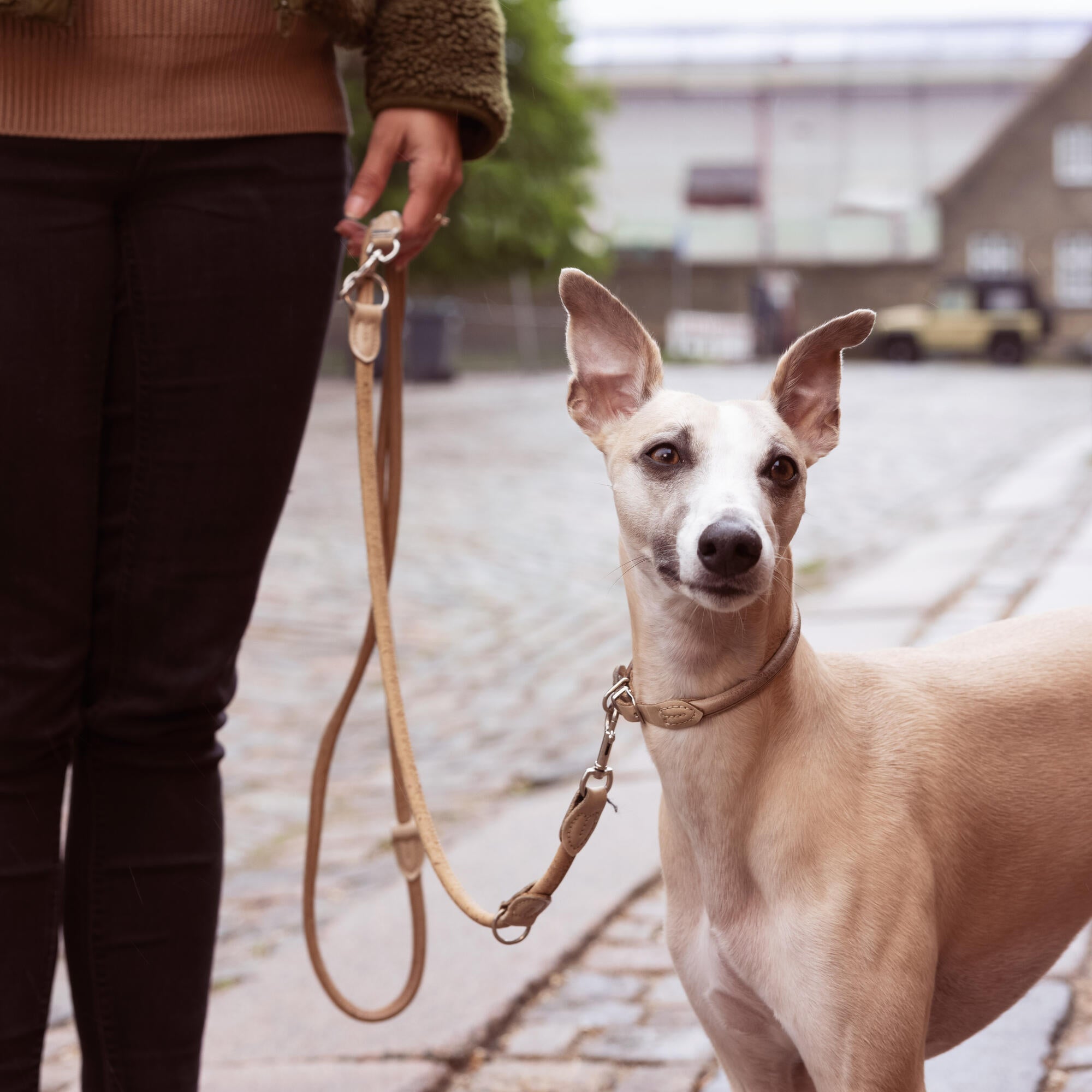Your Cart is Empty

Leash training is an essential skill for both puppies and their owners. Not only does it provide safety and control during walks, but it also strengthens the bond between you and your dog. In this detailed guide, we'll explore effective methods for leash training a puppy, incorporating natural dog treats and puppy food into the training process. Additionally, we'll discuss the benefits of Essential dog food for your puppy's overall health and well-being
Leash training is crucial for ensuring the safety of your puppy when outdoors. A properly trained puppy will walk calmly beside you, reducing the risk of accidents such as running into traffic or encountering aggressive dogs. Additionally, leash training provides you with control over your puppy's movements, allowing you to guide them away from potential hazards and distractions.
Leash training also plays a vital role in your puppy's socialization and exploration. By introducing them to different environments on walks, you help them develop confidence and adaptability. Proper leash training allows your puppy to enjoy new sights, sounds, and smells while remaining under your supervision and guidance.
Begin leash training in a familiar and controlled environment, such as your home or backyard. Introduce your puppy to their leash and collar gradually, allowing them to sniff and explore the equipment. Use positive reinforcement, such as natural dog treats, to create a positive association with wearing the leash and collar.
Teach your puppy to walk on a loose leash by encouraging them to walk beside you without pulling. Start with short walks indoors or in a quiet outdoor area, using treats to reward your puppy for walking calmly at your side. Consistency and patience are key during this stage, as it may take time for your puppy to master loose-leash walking.
If your puppy begins to pull on the leash, stop walking and wait for them to return to your side. Avoid pulling back on the leash or engaging in a tug-of-war, as this can reinforce the pulling behavior. Instead, use verbal cues such as "heel" or "let's go" to encourage your puppy to walk beside you again. Reward them with treats when they comply.
Natural dog treats are an excellent motivator for leash training sessions. Choose treats that are small, soft, and irresistible to your puppy, such as pieces of dried liver or chicken. Reward your puppy with treats for walking nicely on the leash, focusing on you, and responding to commands. This positive reinforcement strengthens the desired behaviors and encourages your puppy to repeat them.
Incorporate leash training into your puppy's mealtime routine by using their regular puppy food as a reward. Before feeding your puppy, portion out a small amount of their food and use it as treats during leash training sessions. This not only reinforces good behavior but also helps prevent overfeeding and maintains your puppy's nutritional balance.
Leash training a puppy is an essential aspect of responsible pet ownership. By following the steps outlined in this guide and incorporating natural dog treats and puppy food into your training regimen, you can effectively teach your puppy to walk on a leash with confidence and ease. Additionally, choosing Essential dog food for your puppy's diet ensures they receive the nutrition they need to thrive, including a high protein level, B.O.F principle, high-meat content, excellent palatability, and freedom from additives or nasties. With patience, consistency, and the right nutrition, you can set your puppy up for a lifetime of happy and healthy walks.
A1: The time it takes to leash train a puppy can vary depending on factors such as the puppy's age, temperament, and previous experiences. With consistent training and positive reinforcement, many puppies can learn basic leash manners within a few weeks.
A2: Both harnesses and collars can be effective for leash training, but it ultimately depends on your puppy's individual needs and preferences. Harnesses are often recommended for puppies with sensitive necks or breeds prone to respiratory issues, while collars provide more control for larger or stronger dogs.
A3: Yes, it's possible to leash train an older dog, although it may require more patience and consistency compared to training a puppy. Regardless of age, using positive reinforcement techniques and rewards can help older dogs learn to walk calmly on a leash.


